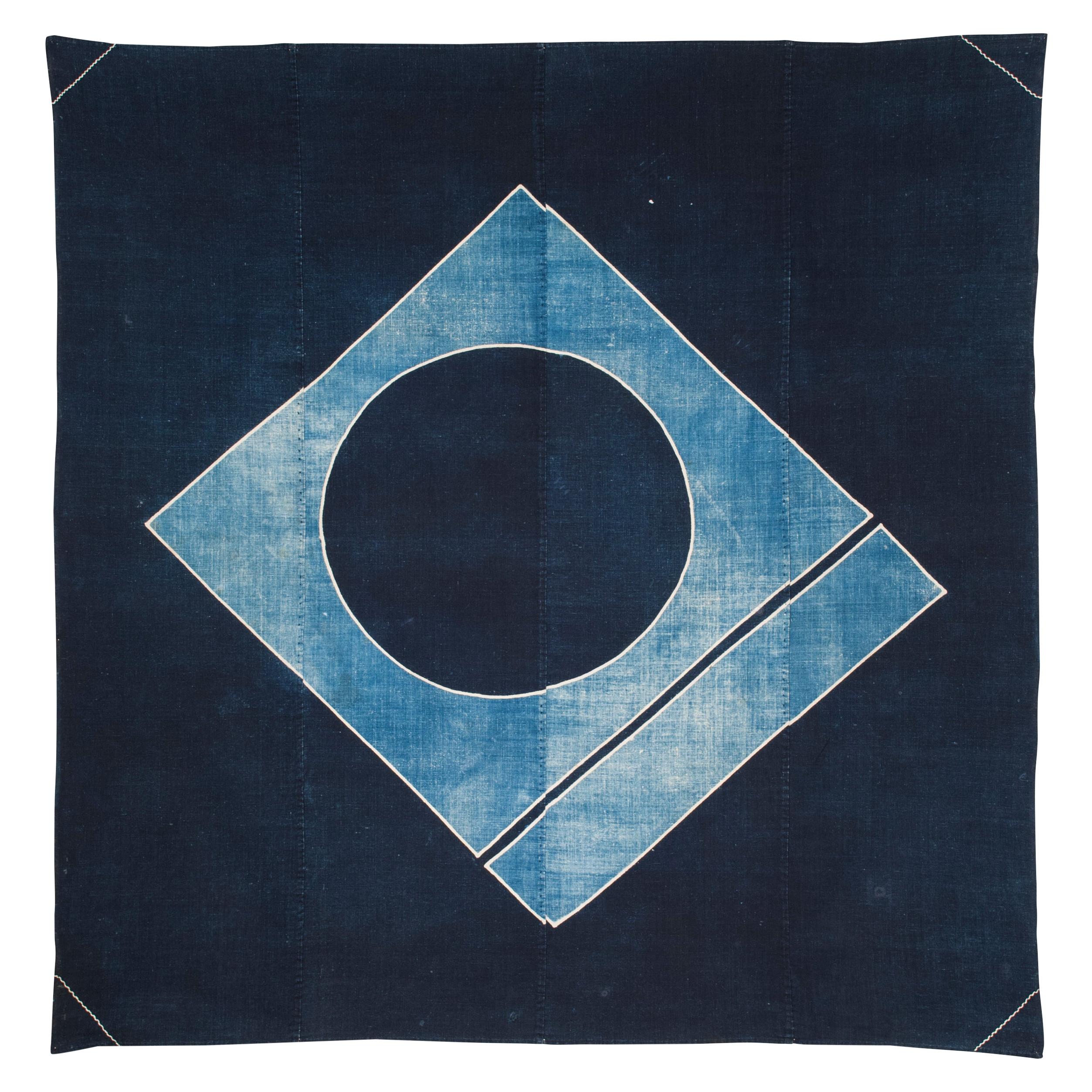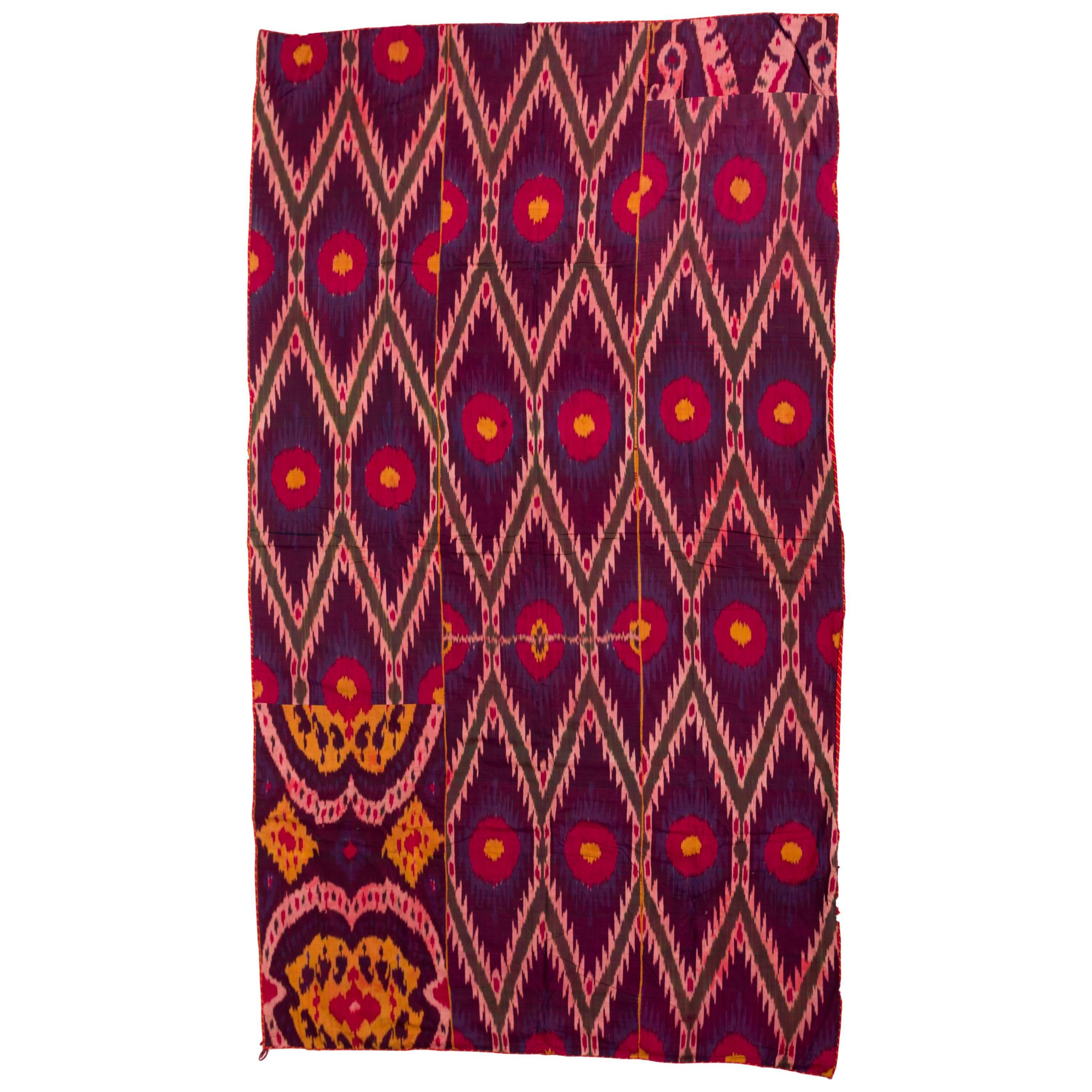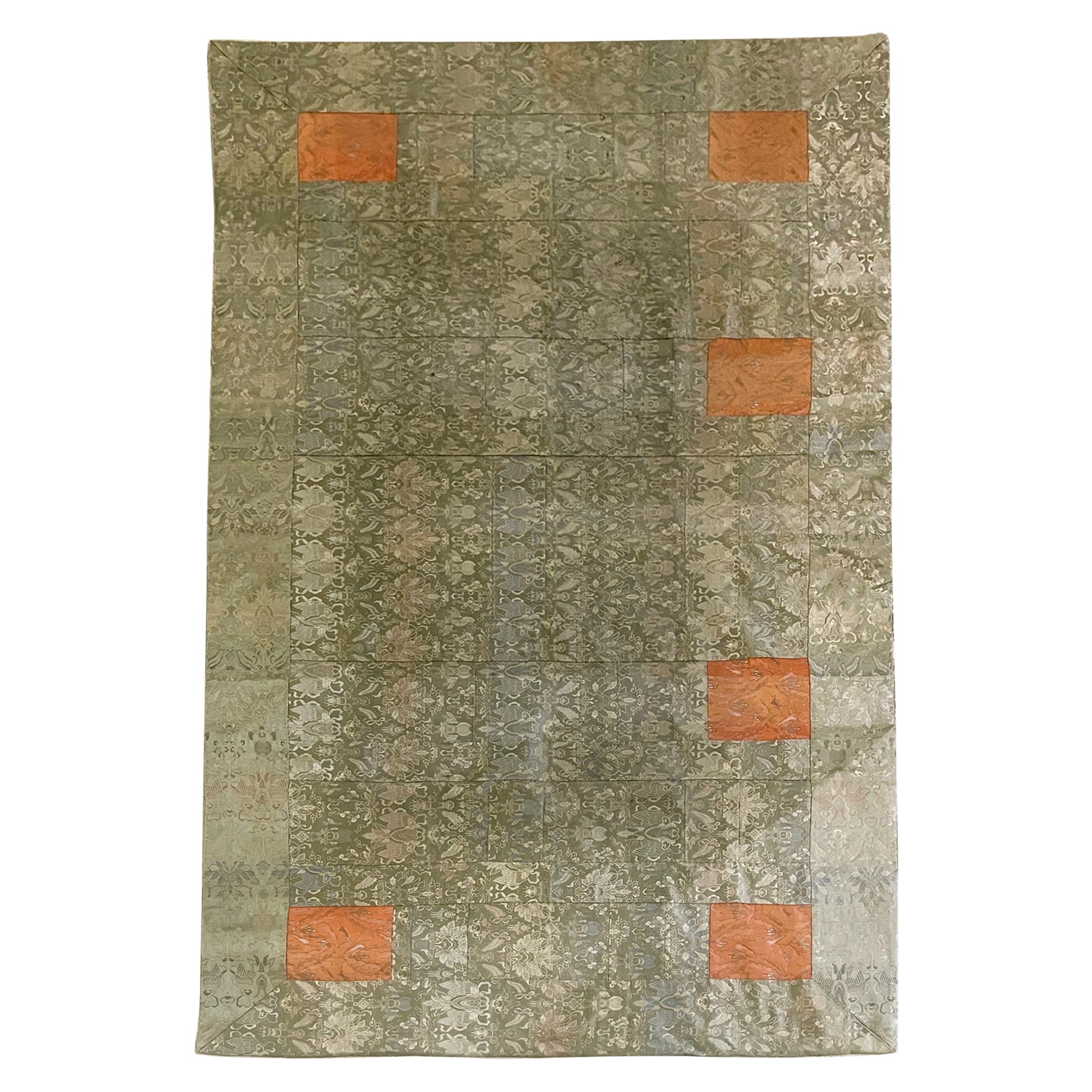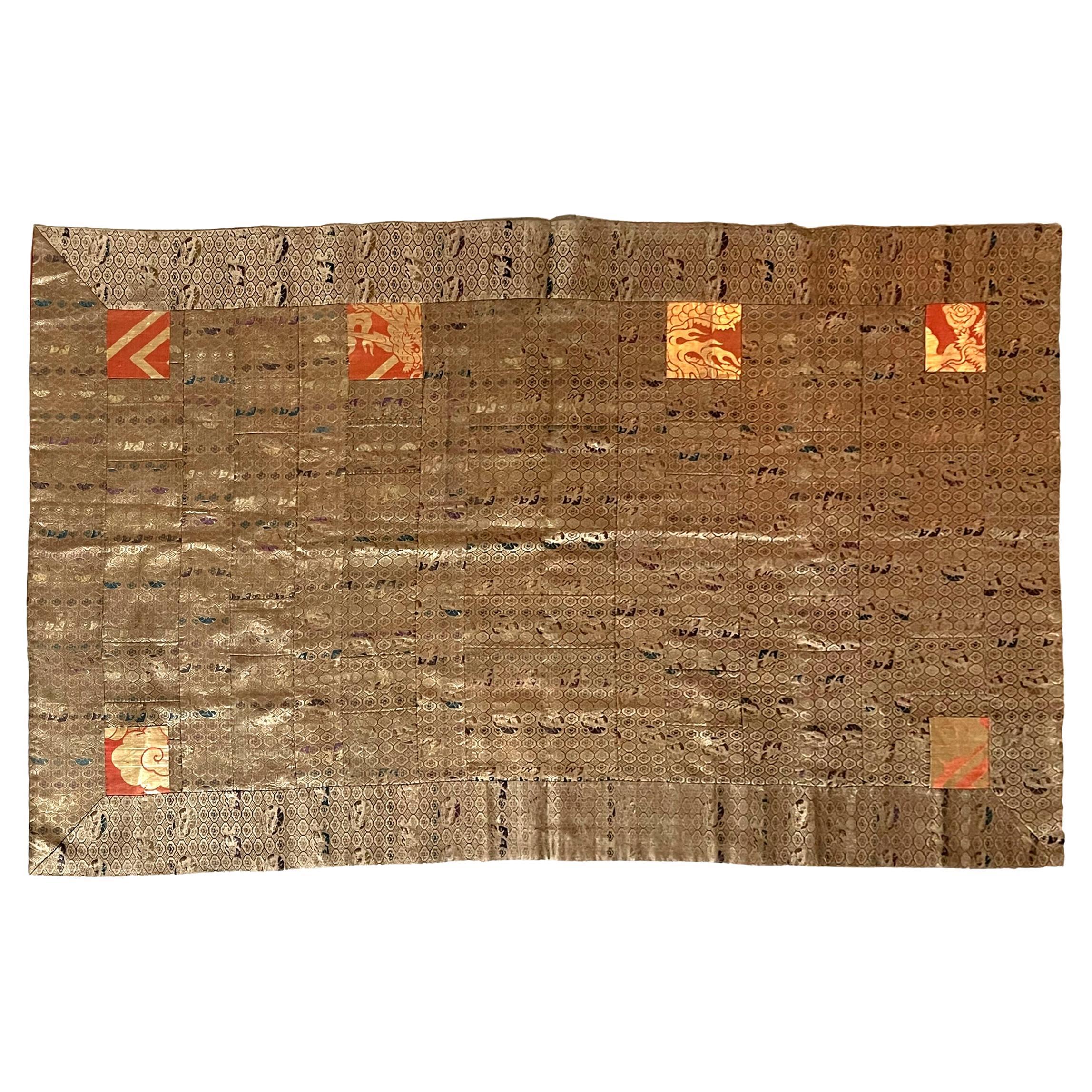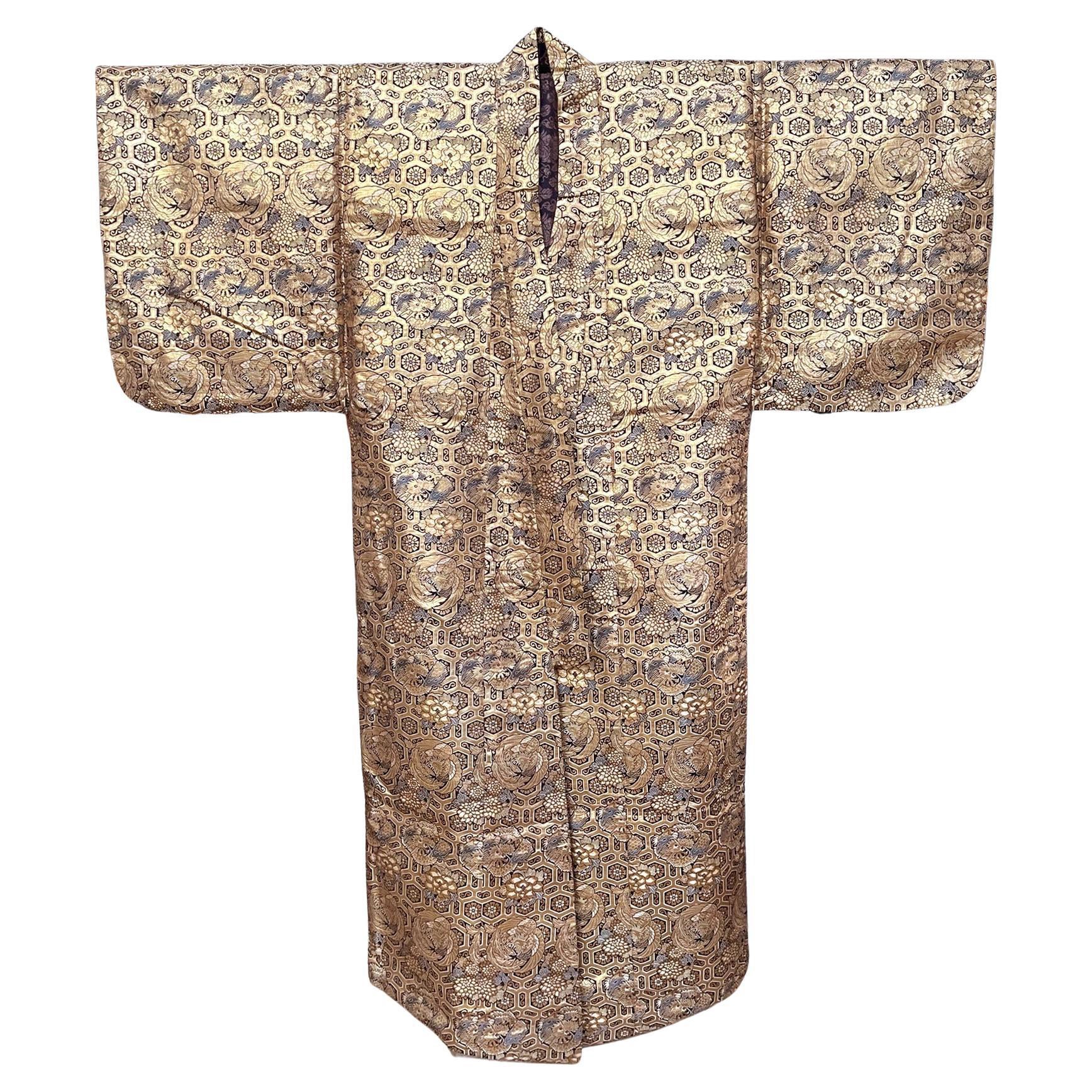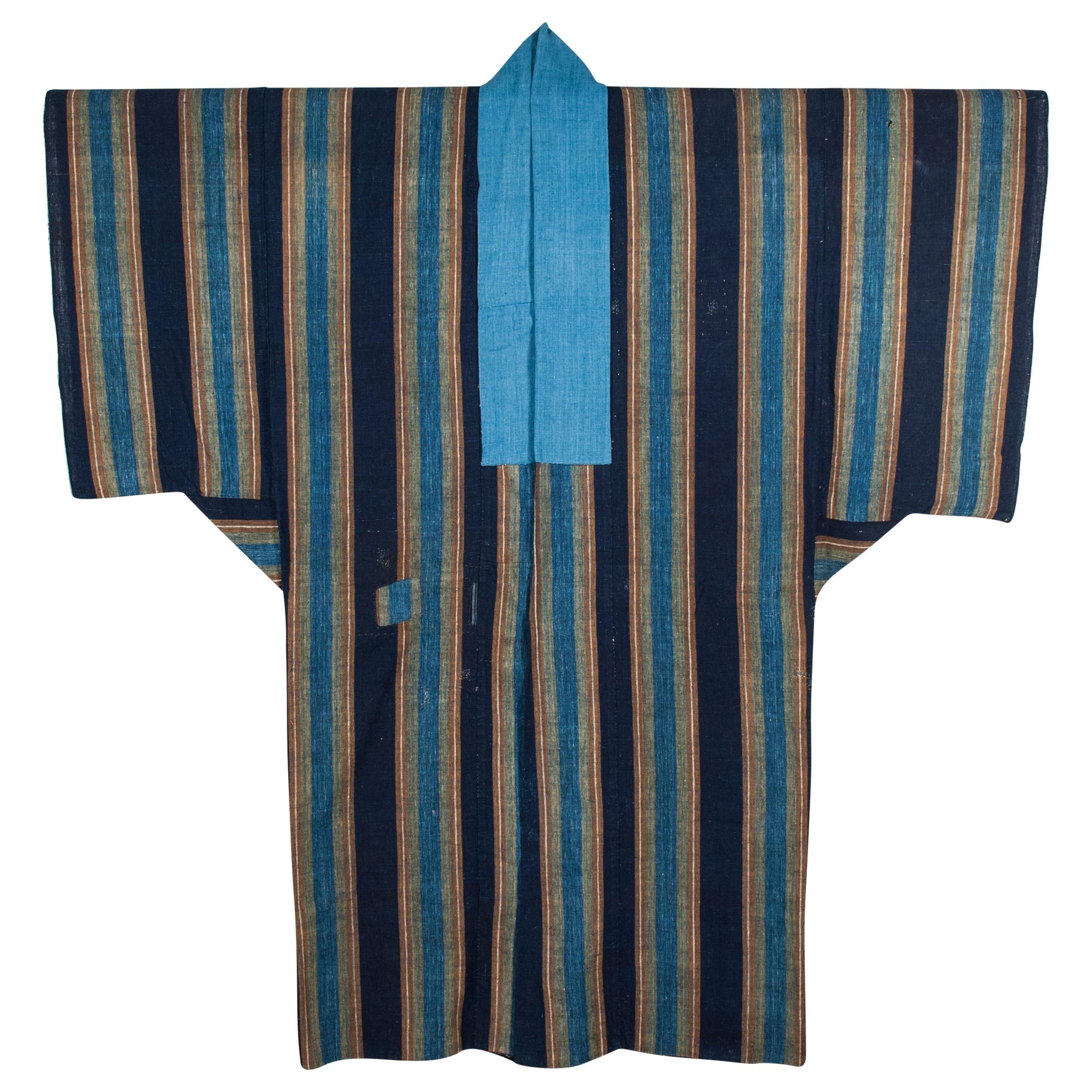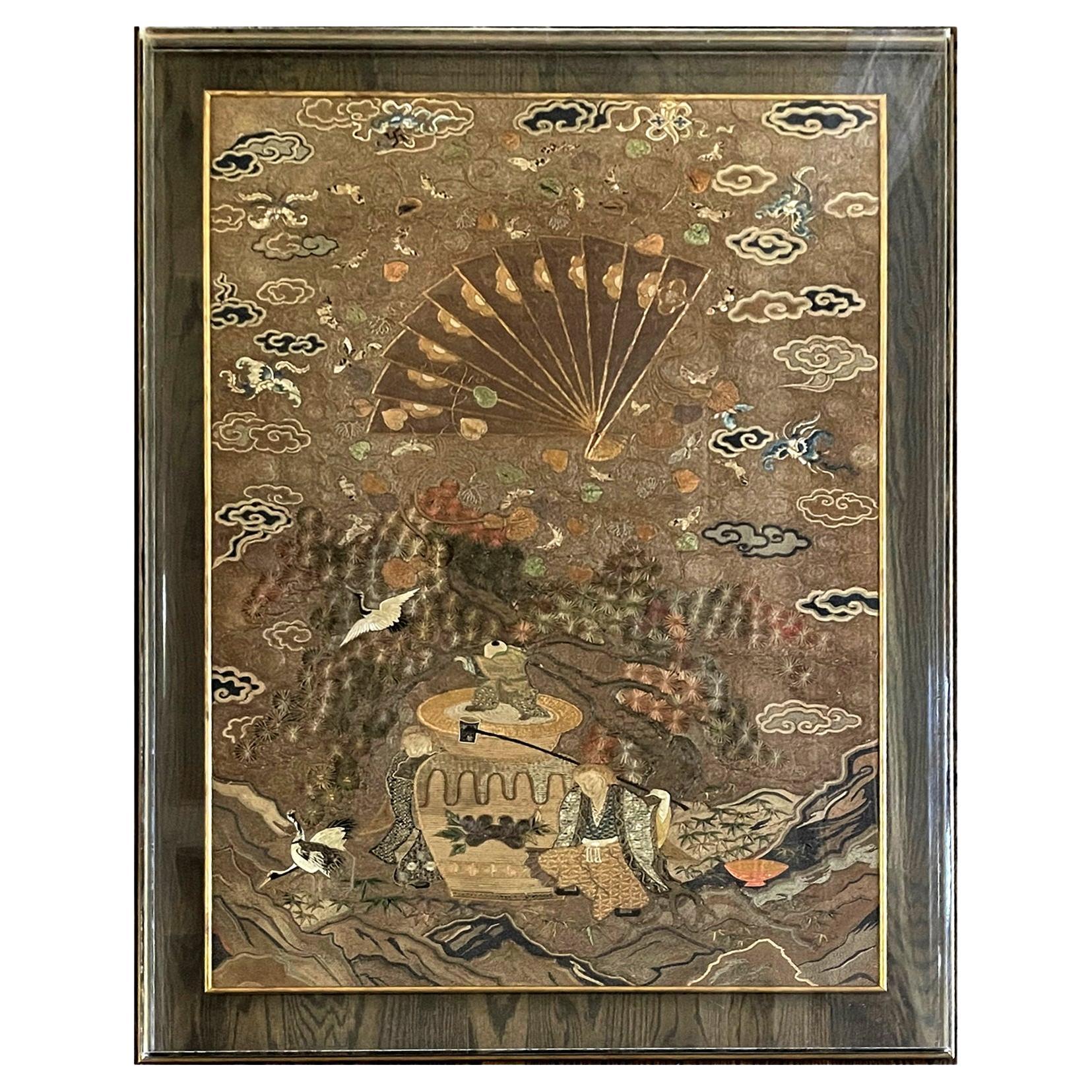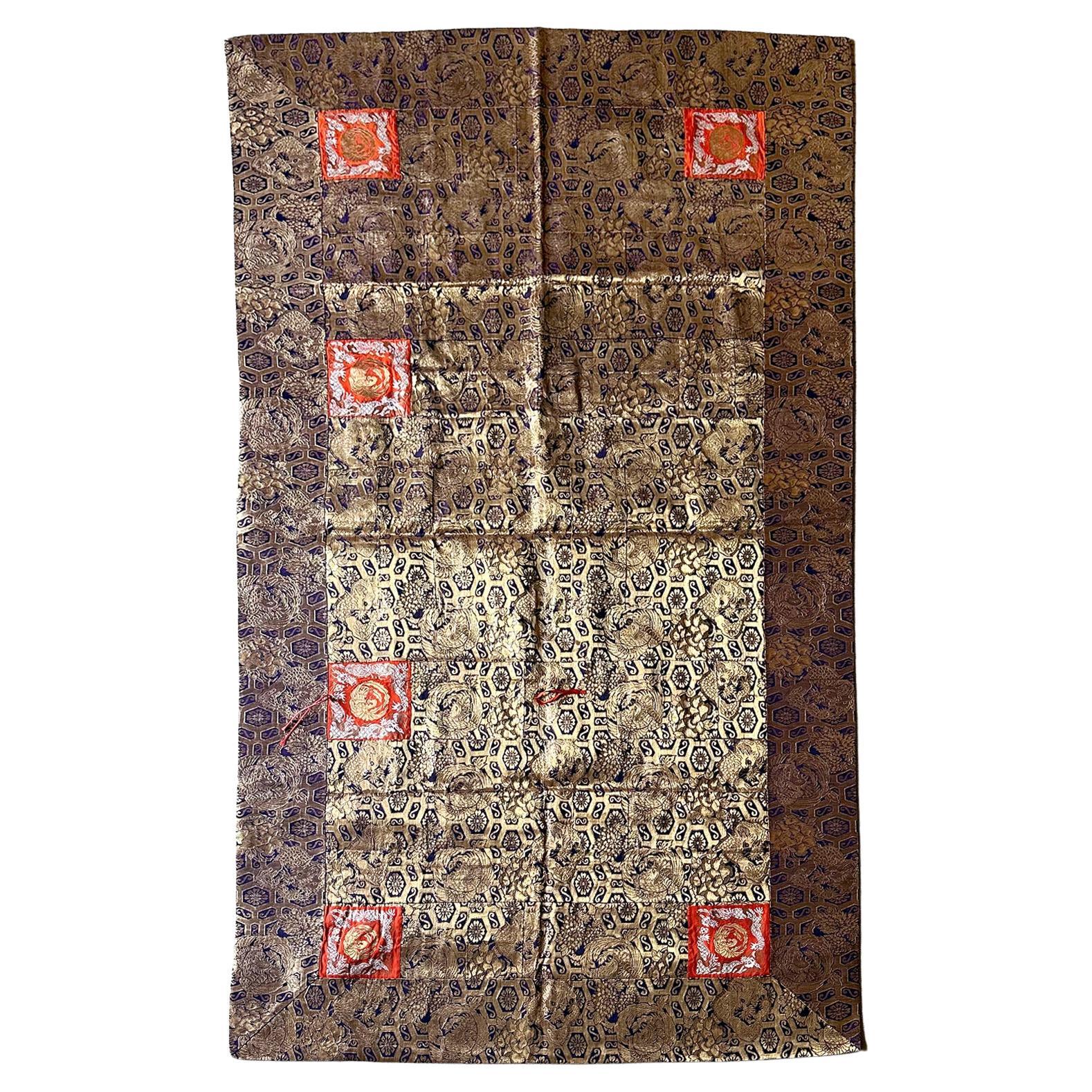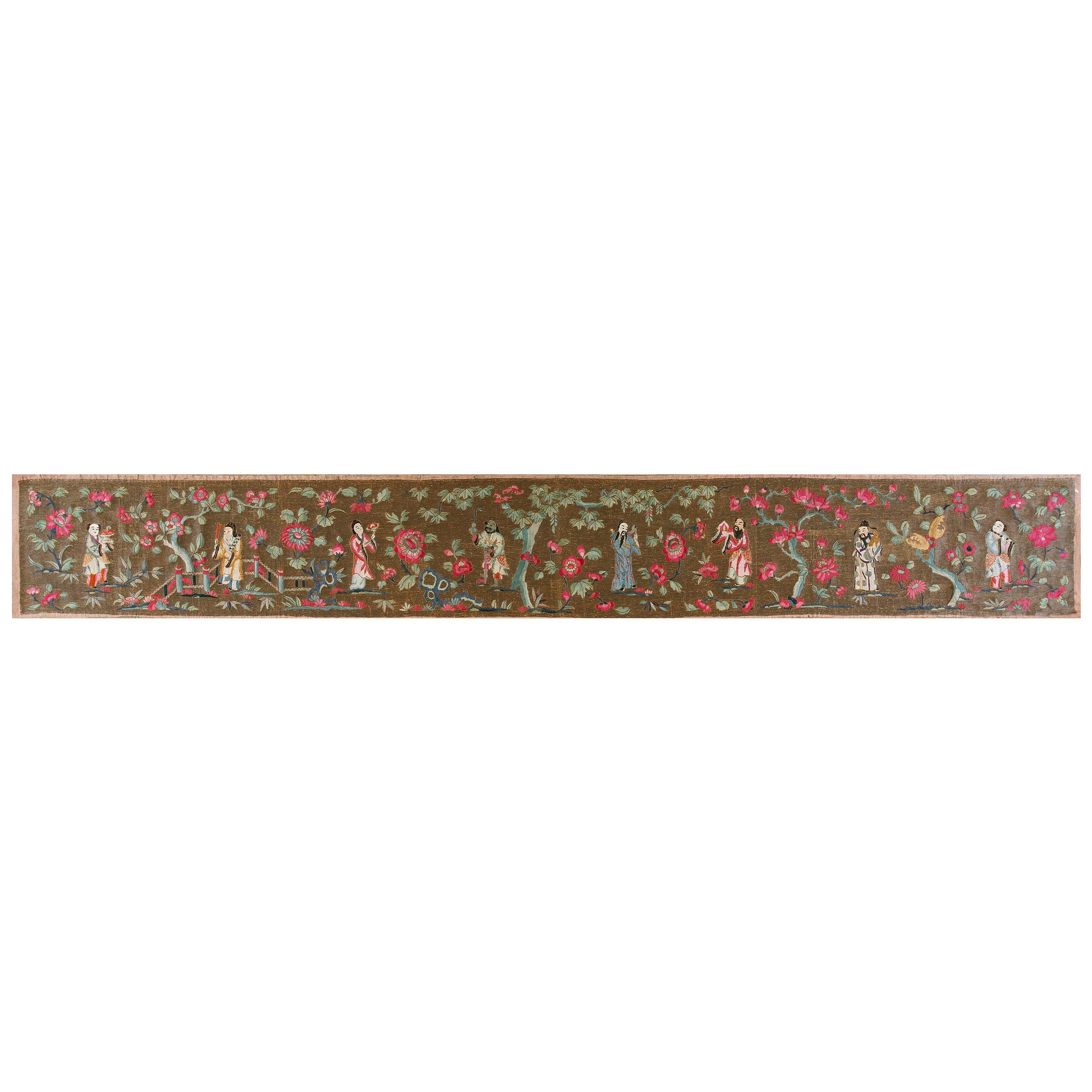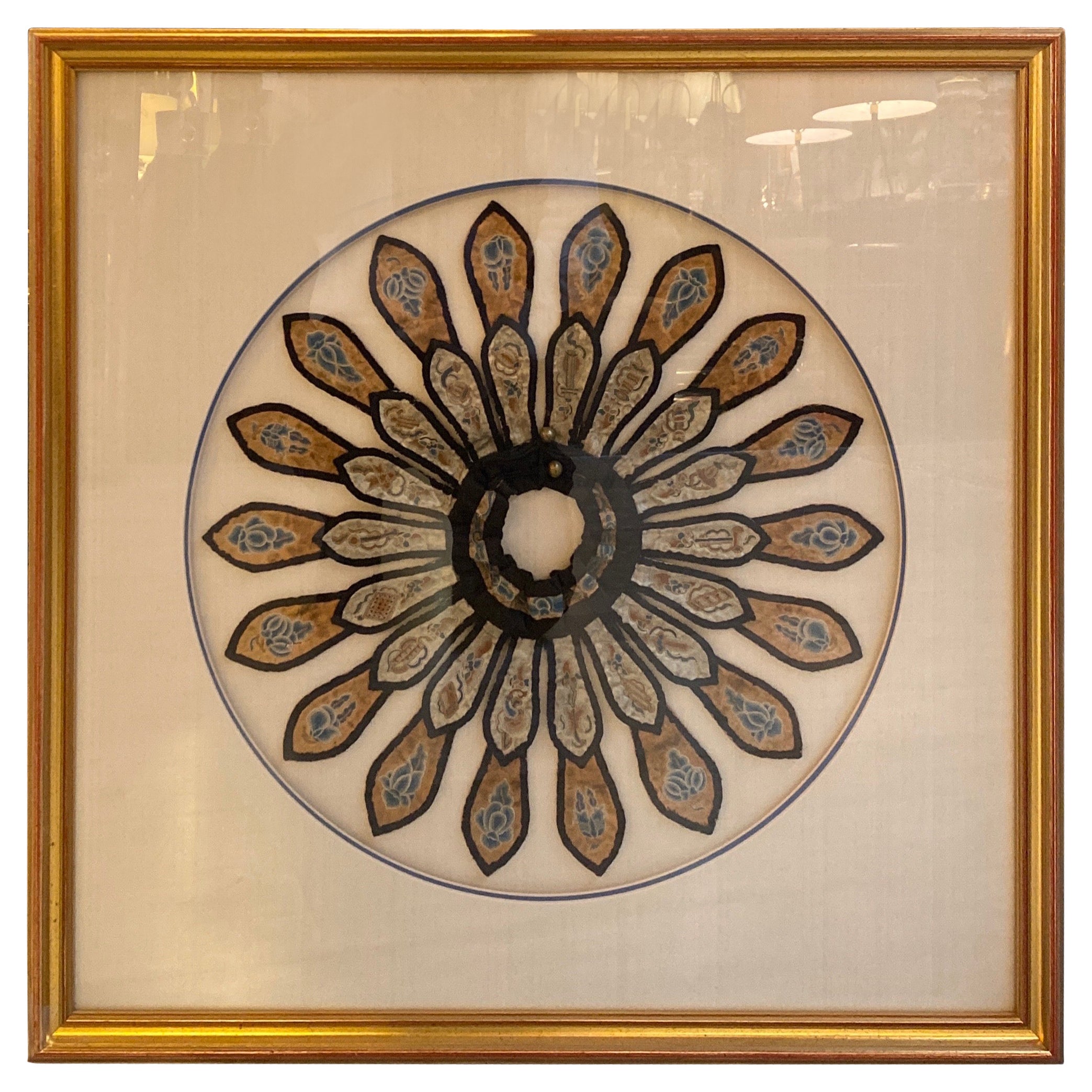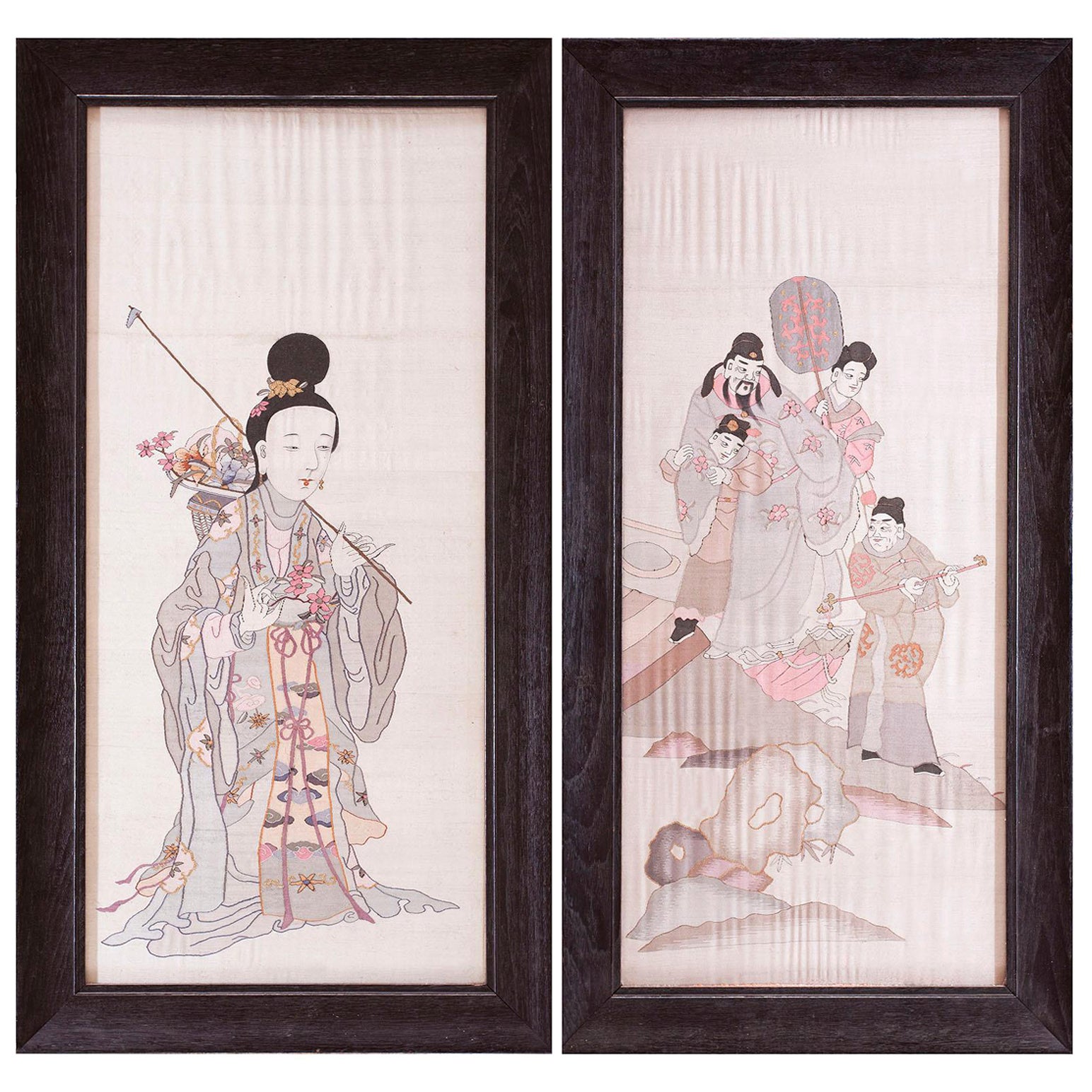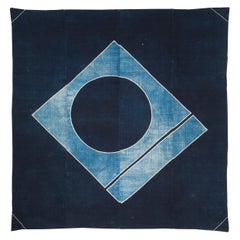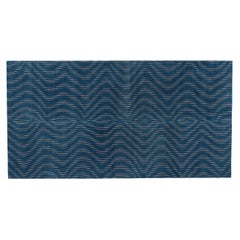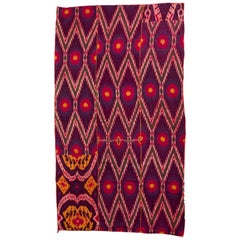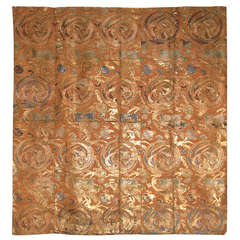
Late - 19th Century (Meiji) Japanese Silk Brocade Temple Hanging
View Similar Items
1 of 3
Late - 19th Century (Meiji) Japanese Silk Brocade Temple Hanging
About the Item
- Dimensions:Height: 70 in (177.8 cm)Width: 65.5 in (166.37 cm)Depth: 1 in (2.54 cm)
- Materials and Techniques:
- Place of Origin:
- Period:
- Date of Manufacture:1880s
- Condition:Wear consistent with age and use.
- Seller Location:Sausalito, CA
- Reference Number:Seller: J13-52411stDibs: LU85661117274
You May Also Like
- Late 19th Century Wrapping Cloth / Furoshiki, JapanLocated in Point Richmond, CALate 19th century wrapping cloth / furoshiki, Japan Hand-drawn resist-dyed (tsutsugaki) in natural indigo, this large wrapping cloth (furoshiki) disp...Category
Antique Late 19th Century Japanese Meiji Textiles
MaterialsCotton
- Late 19th Century Japanese Stencil-Dyed Textile / Kumano-zomeLocated in Point Richmond, CALate 19th Century Japanese Stencil-Dyed Textile / Kumano-zome This 2-panel cotton textile was made in the Kumano region of Okayama Prefecture in th...Category
Antique Late 19th Century Japanese Meiji Textiles
MaterialsCotton
- Late 19th Century Uzbekistan Tribal Silk Ikat PanelLocated in New York, NYLate 19th century silk tribal Ikat weaving panel from Uzbekistan, Central Asia. Luxurious over saturated magenta, purple, gold, green and pink. Reverse s...Category
Antique Late 19th Century Uzbek Tribal Tapestries
MaterialsSilk
- Antique Japanese Brocade Monk's Robe Kesa Meiji PeriodLocated in Atlanta, GAA Japanese Kesa (Monk's Vestment) made from thirteen columns of patchworks of shimmering woven brocades. The elaborate motifs feature repetitive elaborat...Category
Antique Late 19th Century Japanese Meiji Textiles
MaterialsBrocade, Silk
- Antique Japanese Brocade Kesa Monk's Robe Meiji PeriodLocated in Atlanta, GAA stunning Japanese Kesa (Monk's Vestment) made from thirteen columns of patchworks of shimmering woven brocades. The elaborate motifs feature repetitive...Category
Antique Late 19th Century Japanese Meiji Textiles
MaterialsBrocade, Silk
- Japanese Brocade Noh Costume Kimono Robe Meiji PeriodLocated in Atlanta, GAA Noh costume made from magnificent silk twill brocade woven with metallic gold threads circa 1930s. The robe is identified as "Atsuita", made for male actors in the Noh play. The luxuriant fabric has a deep blue background with golden interlocking hexagon pattern that resembles tortoise shells, the symbol of longevity. The motifs showcase three auspicious symbols in repetitive patterns: roundels of coiled dragon, phoenix and peony. The kimono robe...Category
20th Century Japanese Meiji Textiles
MaterialsBrocade, Silk
Recently Viewed
View AllMore Ways To Browse
Antique Japanese Tapestry Wall Hanging
Jean Picart Le Doux On Sale
Korhogo Mud Cloth
La Dame A La Licorne
Le Guen
M Ray Tapestry
Patrice Allard
Psychedelic Nude Tapestry
R Debieve
Rare Vintage Egyptian Tapestry
Reeves Tapestry
Rene Fumeron On Sale
Robert Debieve On Sale
Ted Morris
Vintage Vestimenta
Bird Needlepoint Art
Hindu Tapestry
Large Japanese Embroidery Tapestry Meiji Period
